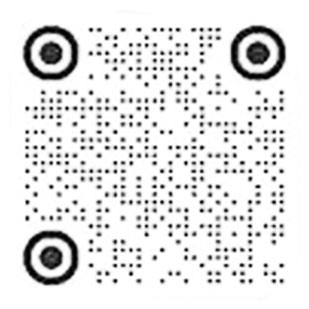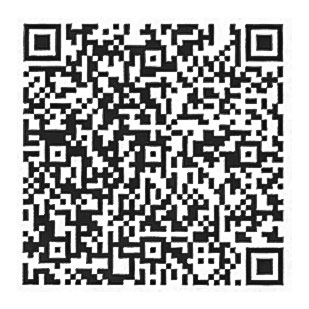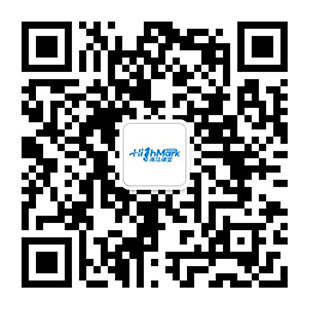备案号:辽ICP备19007957号-1
![]() 聆听您的声音:feedback@highmark.com.cn企业热线:400-778-8318
聆听您的声音:feedback@highmark.com.cn企业热线:400-778-8318
Copyright ©2015- 海马课堂网络科技(大连)有限公司办公地址:辽宁省大连市高新技术产业园区火炬路32A号创业大厦A座18层1801室
Discussion on How Net Locality Works and Influence People’s Life
Introduction
Net locality is a geo-social partner in the big family of social media.This location-based service is well known for being humanized, which can help people find what they like or where they want to go (Presner et al, 2014); while it also expose the privacy of users and other unrelated person. It enriches life but builds a virtual real environment for people to believe. Based on this controversy, the essay will focus on what the net locality is and its functions, illustrating what the advantages and disadvantages it can bring; then further discuss how to overcome its weaknesses to better serve people and society. Through this essay, some examples of the net locality services and their specific uses will be included for a clearer understanding.
Functions of Net locality and Media
At the Where 2.0 Conference in May 2008, the Google product manager for GeoSearch, Ron announced that people should no longer think about Google Map. Instead, they need to think about Google on maps (Gordon and Adriana, 2011). His explanation implies the web application is no longer isolated functionality, but it has been transited into an all-around online search concept, while, the net locality is developing under this general trend.
Net locality is a location-related ecological system, based on mobile technologies like GPS, GSM and GIS, and so forth.Net locality is not just a tool of visualization, but it more implies a different way of knowing and experiencing space (Gordon and Adriana, 2011). The concept of web mapping 2.0 has combined the technology, infrastructure, social and phenomenal interactive features; it’s doing more than transforming mapping practices, it is transforming communication more expansively. Net locality is an ever-expanding database, providing an interface from which to conduct further searches. The accessibility to net locality does not only concern how many peopleuse this function, but it also emphasizes how the net locality changes people’s behaviors and culture (Gordonand Adriana, 2011). With the rapid development of phone technology, the way people retrieve information has changed accordingly; the networked interactions go further from the previous perceptions of social norms and physical location. Before phone technology and mobile media emerges, people can ‘return’ their real life ifthey closed the computer, but now it's not the case any more. Mobile device is just at hand, and mobile-related net locality really has occupiedthe majority of people’s life(Gordon and Adriana, 2011).
The net locality does not only work on table or portable computer, people increasingly use their Google Map, mobile app, social website and live games to locate places and interact with friends. They cansimply open the ‘location setting’ in a terminal device, and locality service will automatically operate. If they do not want to use it, just slidingto close the setting(Barkhuus and Dey, 2003). For example, the user click on the ‘map’ button at the upper left side of home page ofGoogle.com, then he will see a virtual live map and a blank search box,satellite image and real view reminder at the corners. When he filled an address or name of a famous place in the box, the map will immediately zoom in to find the exact place. If he wants to see clearly what the place is like or what else is around there, he just needs to click one time on the real view reminder. Then he will find some options appear below the search box as’street view’, ‘Photo Sphere’ and ‘Checking the interior’. He even can click some place to see clear pictures. Besides, someone openslocation service function onsmartphone, and then GPS runs for locating his position. While using mobile apps, he can search restaurants or amusement parks to find the exact address and the reviews of others. He can write down reviews on specific location (Luo, et. al, 2004). As to social network’s locality, like that in Facebook, and Foursquare, it seems more useful for making friends or sharing visual dairy with friends or families. When unloading a picture, the small reminder below asks if you want to share your location. Clicking it and choosing from a list of nearby place names or creating a new name, the locality has been finished and the ‘place’ shows by the side of the picture. When playing a live game, the player can locate his place or find playmates’ location in the middle of having fun. They even can discuss game strategies or have causal talks in the meanwhile.
Net locality is also considered serving for society. Some states in America have put Google Map in community planning process (LaRose, Netto and Thomas, 2014). It collects valuable data. As Google boasts, there are over 500,000 registered users actively adding models, pictures, place-marks, reviews, etc. to the database of the online globe (Gordon and Adriana, 2011). In 2007, Massachusetts and Amherst commissioned the buildings of the town center to take the online models for reference. They uploaded the models to the 3D warehouse to have a good view of the landscapes. People can see what the communities look like in the future and how new facilities operate through the computer models. Another example is application of locality in ‘Leadership in Energy and Environment Design for neighborhood Development ‘(LEED-ND), where some streets use Google search, Google Earth and other online resources to determine distributing points of livability model (Clark, 2013). Besides, net locality, with huge number of online users, can help companies to increase their exposure. The users can locate at which restaurants they are having dinner, or at which shops they are buying goods. Besides, they can add good reviews to shops to attract more customers; and even some shops automatically push ads to potential customers or passers-by. Some tourist sites aim to build a striking effect by 3D models.
Advantages and Disadvantages
Obtaining information is the most basic need for human to survive, as proved in the long history of human development. In order to change goods and jointly build society, people need to communicate with each other. After the necessary needs were satisfied, they would own more casual contacts and activities. Social network therefore has solid reasonability of production and development. Based on mature Internet technology, net locality is born without surprise and proved to be helpful. Personally, it helps finding nearby facilities, restaurants, shops and amusement parks in a quickest and convenient way. Web mapping expands one’s contacts. Someone uses geo-social to find common interests (Sih, Hanser and McHugh, 2009). For example, Google API assists mapping people around specific topics, from steak restaurant to best coffee shops; also fans will find another with a similar profile attached to a placemark of Google map. Besides, net locality can enhance sense of security.Since Google map was active, users could search for crimes by type, street, date, police district, zip code, ward or location (Gordon and Adriana, 2011). From the social angle, net locality is a necessary stage of the network technology advance, and could be of great benefit to community construction. When Google first released its API, the datasets can be flexibly chosen, meaning users could plot codes in onto a map. No sooner did Google add ‘My Maps’button and realized an explosion of number of ‘single maps’. Besides, Google Maps developed mashup systems, whichcan prioritize potential of visualizing geographic data. By referring to the data and 3D model contained in KML files, the community planning becomes executable (Gordon and Adriana, 2011). In addition, the geo location information collected from social media will help analyzing and predicting the behavioral patterns of individuals. Such predictions are useful to advertisement localization, tracking the spread of diseases and pollutant exposure (Solomon, 2012).For example, if there exists water pollution, scientists can make researches on pollutant water distribution from sewage system, sources, pipes and wells located on Google maps. By close interview, they would know the relations between residents and pollutant well or other suspicious water supply system. Also, advertiser or agency could collect the data concerning users’ interests, and put up advertisement nearby.
However, weaknesses of this technology cannot be ignored. First, personal privacy may not be protected. Google Map once deployed their cars with cameras in hundreds of cities (Gordon and Adriana, 2011). With the Internet technology developing, net locality cannot satisfy the mere use of street camera and retrieve geo-tagged information, but it develops into a ‘hunter’ with indoor camera.Google Map once invited citizen cartographers to photograph streetscape and interiors (Gordon and Adriana, 2011).It not only can access to the video streams shot outside, but also can catch indoor-shot videos (Gordon and Adriana, 2011). Also, dating someone through locality would increase the possibility of danger.In network, stranger-to-stranger communication is never unusual and draws attentions on security of web (Rubin and Geer, 1998).
Net locality will do harm to national security. Since anyone can find nearly any place in a country through Google Map, thenit is true for the terrorists. They can more easily locate the target, either individual or organizational, and launch an attack. Moreover, improper use of Map can increase junk information, including useless, harmful and illegal information and network virus, which quickly spread around the network. Due to flexibility and fluidity featured net locality like Google Map, the spam can transmit faster and produce more serious consequences (Rahman, 2012).
Faced up with the ubiquitous Google Map, people become clearer about the world. As Map is ever extending the range of real life, and there are an increasing number of users living in an augmented reality. They incline to believe this virtual reality is equivalent to that of the real world. They may become reluctant to cognize the life with their own eyes, but believing what showed on mobile phone. As William Wordsworth warned, ‘the world is too much with us’. In the past, the industry revolutionreplaced handicraft with massive production of machines. This influential transformation unveiled the nature’s mystery and proved human power. With the rapid development of society, people witnessed greater miracles than the three industry revolutions and are capability of controlling the world. Google Map mayprove this prediction. The more orientations are networked located, the more uncomfortable feeling people would have.
Directions on Proper Application
People should do something to make net locality more beneficial. Since it is unadvisable to hinder or refuse the development of technology, it should at greater degree reply on new media literacy education.
New media literacy is an ability people use it to adapt to new media environment and social change, under the background of social network, Internet and mobile revolutions. As Lee and Wellman said, networking literacy includes image processing, information organization, multitasking, doubtful spirits and moral literacy (Lee and Wellman, 2011). Technical processes can be easily learnt, but moral education needs greater efforts. For example, people should know the major part of Google Map is to serve society, convenient life, while infringing privacy and threatening security must be forbidden. Besides, people should aware the significance of their own safety, then they could be more considerate of others.
In addition, the regulatory system of net locality should be reinforced. As the new emergence of the new technology, relevant regulations are incomplete or unreasonable yet. Google Map should be regulated and functionally adjusted by the government according to the current situation and changing trend of net locality (Meyer, et. al, 2014). In the meanwhile, Google Map should be more applied to social management and criminal protection. Some countries have developed the Mapping devices to maintain security of residential areas and trace criminals.
Conclusion
Net locality, as a product of social network development, is of great help and convenience. However, due to its weaknesses, users meet with troubles at times. The privacy is exposed, with security of nation unprotected; people are easily trapped into virtual society, without proper cognition of their real life. Accordingly, people should be required to reinforce their new media literacy, relevant regulations should be completed, and more proper and valuable applications should be attached on net locality.
Reference:
Barkhuus, L., & Dey, A. K. (2003). Location-Based Services for Mobile Telephony: a Study of Users' Privacy Concerns. In INTERACT, 3, 702-712).
Clark, H.E. (2013). LEED for neighborhood Development: Does it Capture Livability, Berkeley Planning Journal, 26(1), 81-123.
Gordon, E. and Adriana, De Sa. (2011). Net Locality: Why Location Matters in a Networked World, Chichester, West Sussex: Wiley-Blackwell.
LaRose, J., Netto, A., and Thomas, T. (2014). Transit Access and Regional Coordination in Metropolitan Detroit, Critical Planning, 21.
Lee, R. and Wellman, B (2015). Networked: The New Social Operating System. viewed 6 May 2015, http://www.cdf.toronto.edu/~csc200y/fall/Lectures/Networked_Draft_Ch2_and_Ch5
Luo, H.Y. Kong, J.J, Zerfos, P., Lu, SW. and Zhang, LX. (2004). URSA: Ubiquitous and Robust Access Control for Mobile Ad Hoc Networks, Los Angeles: UCLA Computer Science Department.
Meyer, J., Bethel, E.W, Horsman, J.L. and Hubbard, S.S (2014). Visual Data Analysis as an Integral Part of Environmental Management, California: Berkeley National Laboratory.
Presner, T, Shepard, D and Kawano, Y. (2014). Hypercities Thick Mapping in the Digital Humanities, Harvard: Harvard University Press.
Rubin, A.D. and Geer, D.E. (1998). A survey of Web security, Computer, 45(9), 45-51.
Rahman, M. (2012). Detecting Social Malware and its Ecosystem in Online Social Networks. Computer Science, 2(9), 43-76.
Sih, A., Hanser, S.F. and McHugh, K.A. (2009). Social network theory: new insights and issues for behavioral ecologists, BehavEcolSociobiol, 63(9), 975-988.
Solomon, Z.I. (2012). A Framework for Analyzing Human Mobility in Online Social Networks, Los Angeles: University of California.

 24h在线客服
24h在线客服







备案号:辽ICP备19007957号-1
![]() 聆听您的声音:feedback@highmark.com.cn企业热线:400-778-8318
聆听您的声音:feedback@highmark.com.cn企业热线:400-778-8318
Copyright ©2015- 海马课堂网络科技(大连)有限公司办公地址:辽宁省大连市高新技术产业园区火炬路32A号创业大厦A座18层1801室
hmkt088